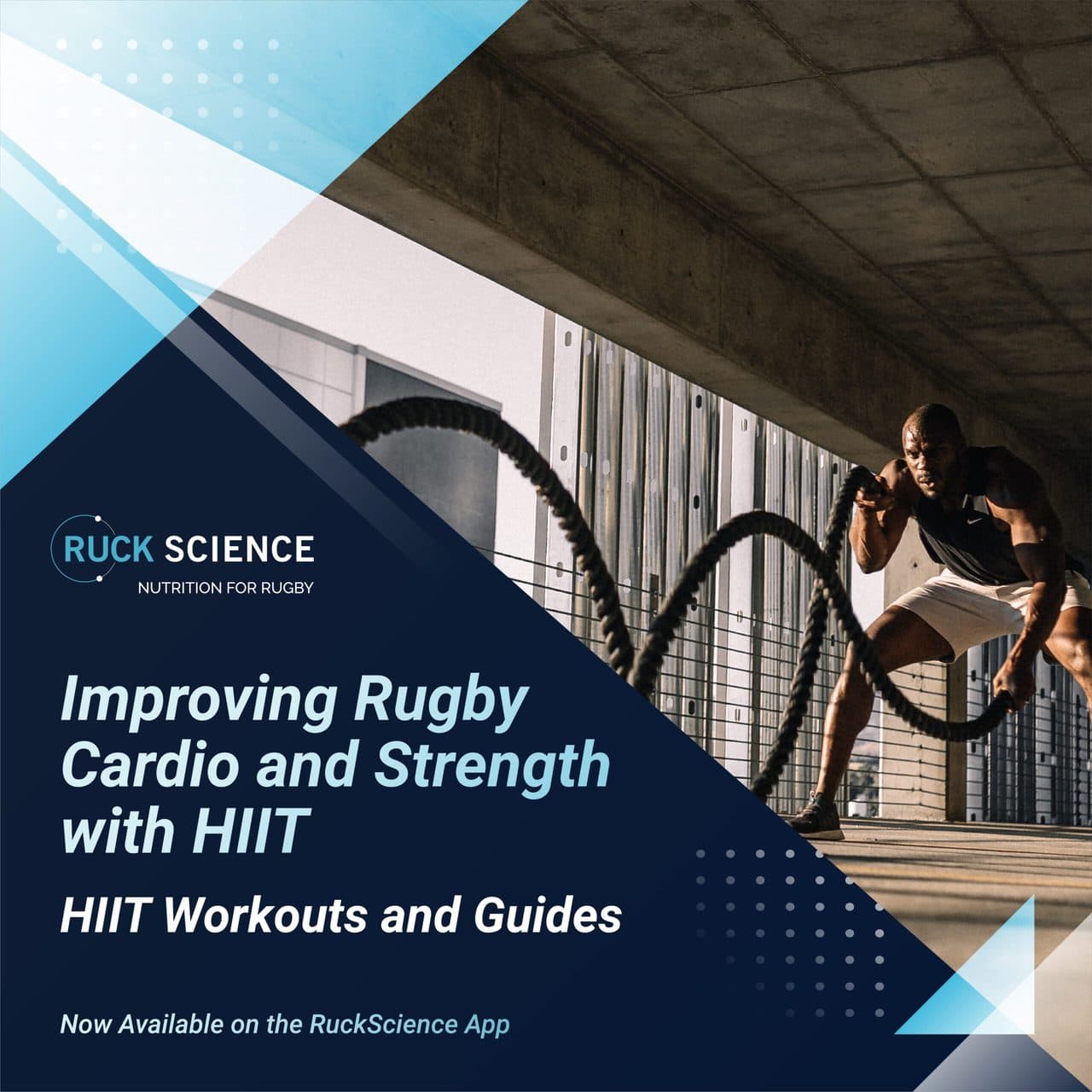
Most Important Rugby Exercises and Why?
Few sports are as physically demanding as rugby. To be an effective rugger, you need strength, power, muscle mass, aerobic fitness, anaerobic fitness, agility, and mobility.
Having a high cardio capacity is a winning formula for rugby players. But how much cardio do you need? And how can you do it without killing your joins and creating RSI injuries?
This page includes all our best literature on cardio training for rugby players. Want just 1 tip? Get on the rowing machine, it’s the best thing you can do today for a full-body cardio workout without crushing your knee cartilage.

Few sports are as physically demanding as rugby. To be an effective rugger, you need strength, power, muscle mass, aerobic fitness, anaerobic fitness, agility, and mobility.

Training for rugby can be very time-consuming. As well as developing a decent level of aerobic and anaerobic fitness, you need to be quick, agile, strong, and powerful, too. You’ll also need to find time to work on your mobility and flexibility and continue improving your rugby skills.

10 HIIT Workouts for Faster Rugby Fitness Facebook Twitter Share Time is arguably the most valuable commodity. It’s something that often seems to run out fast, and it’s tough to make more. That’s especially true for rugby players because, on

The short answer to that question is yes, you can. But, before you lace up your running shoes and start pounding the pavement, running ruggers should consider the following about marathons.

Much like rowing, air bike workouts provide a full-body burn that can leave you as exhausted as rugby training. What is an assault bike? Your greatest love and worst enemy all at once.

How do you keep training for rugby through the quarantine? Grab a jump rope and get to skipping. Here’s our guide to jumping rope for rugby.

Should you do sprint intervals (SIT) or high intensity intervals (HIT) for rugby training? If you want to increase your VO2 Max with the minimum effective dose of cardio, Sprints are the way to go for rugby players.

Swimming is an excellent addition to your rugby fitness training schedule. The fitness developed in the pool should transfer well to the pitch. However, you should still include at least some running in your workouts.

Sprinting, tackling, scrummaging, and lifting and jumping in the lineout all utilize the two anaerobic energy pathways – the creatine phosphate system and the lactate system. But before you hang up your running shoes for good, it’s important to consider the role of the aerobic system in rugby.

If it’s the middle of winter (or summer) and you can’t get out on the rugby field, how do you get your cardio up for the season? If you’re looking at the cardio machines in the gym, think about using some of these treadmill exercises and get after it!

How do you build a cardio base for rugby season without running? It comes down to exercise selection. The #1 thing you want to do is avoid injury. So we recommend eliminating impact in your cardio training by jumping in the pool, on the bike or the rowing machine this pre-season.

How much cardio do rugby players need? The answer is it depends on your levels of fitness, position and goals for the upcoming season. But in general terms, you probably want to have a higher cardio base than you have now. Here’s how to get that cardio.

How do you know if you’re fit enough for rugby? These fitness tests will give you a good baseline if you’re training for the upcoming rugby season. Note that fitness does not equal strength, there’s more to being rugby-fit being benching a whole lot.

Beep testing is usually used to test Vo2 Max in athletes, so it’s not typically a training methodology. But pushing your Vo2 Max is also a great way to get fitter. Get rugby-fit by implementing these beep test variations.

Cardio puts everyone in the mood for rugby, gets the heart rate up and helps guarantee a minimum fitness standard. So we recommend that if you’re a rugby coach, start your team’s training sessions with 20mins of cardio!
The materials and information provided in this presentation, document and/or any other communication (“Communication”) from Ruck Science, LLC or any related entity or person (collectively “Ruck Science”) are strictly for informational purposes only and are not intended for use as diagnosis, prevention or treatment of a health problem or as a substitute for consulting a qualified medical professional. Some of the concepts presented herein may be theoretical.
References to any non-Ruck Science entity, product, service, person or source of information in this or any other Communication should not be considered an endorsement, either direct or implied, by the host, presenter or distributor of the Communication. The host(s), presenter(s) and/or distributor(s) of this Communication are not responsible for the content of any non-Ruck Science internet pages referenced in the Communication. Ruck Science is not liable or responsible for any advice, course of treatment, diagnosis or any other information or services you chose to follow without consulting a qualified medical professional. Before starting any new diet and/or exercise program, always be sure to check with your qualified medical professional. For details of our affiliate program please see our Terms & Conditions. Click here for our Privacy Policy